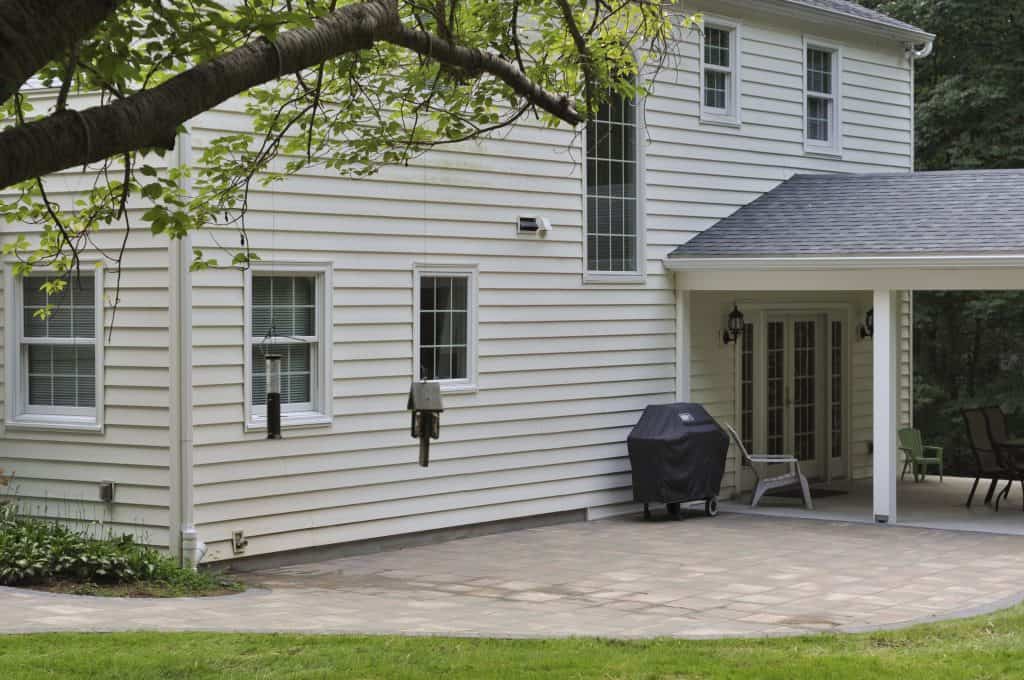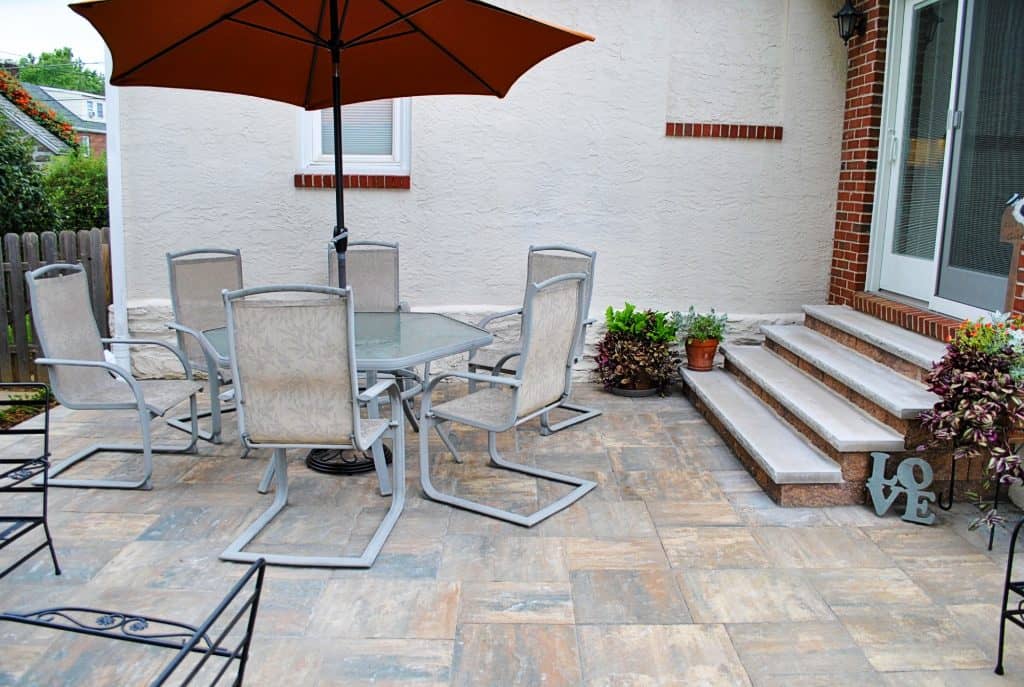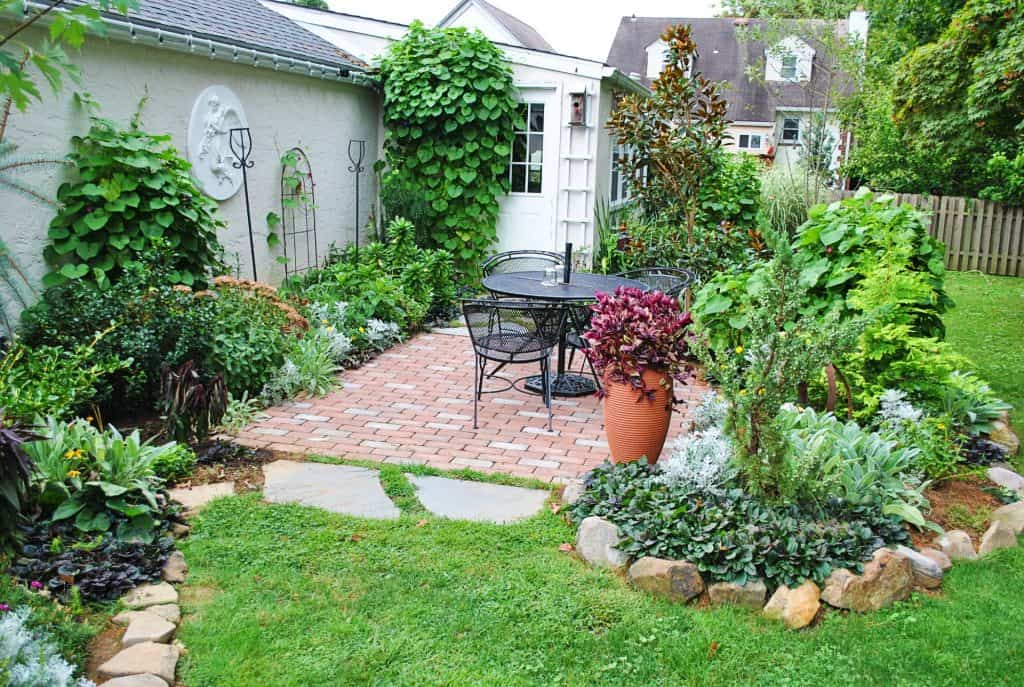Installing a quality paver patio is a big investment for your home. Naturally, you’ll want to keep your patio looking like new if you can. In this post we’ll discuss how to protect and maintain your paver patio so you can continue to get the most out of your investment.
Why Paver Patios?
If you’re thinking about installing a patio, you’re not alone. Recent trends show backyard patios and outdoor living spaces are a rising priority for many homeowners. The allure of being able to walk outside your home to a new outdoor retreat is difficult to pass up.
Not only are paver patios easy on the eye, but they’re also easy to maintain. Pavers are durable, and they don’t require a ton of energy to clean. That means most of your time can be spent enjoying your patio, and not protecting it.

5 Ways to Protect and Maintain your Paver Patio
1. Seal Your Patio
The first way to keep your patio looking new is by sealing it as soon as it’s installed. Consider resealing your patio every one to two years. Not only will this protect your pavers from the brutal seasons and their elements, but it will also make them a whole lot easier to clean.
Sealers also help prevent weeds from growing between your pavers, and they can add a beautiful shine as well.
2. Sweep/Broom Your Pavers
An easy way to keep your patio protected is by sweeping it on a regular basis. Don’t let dirt or other debris build up over your pavers; it can eventually cause erosion and further damage. Weekly sweeps should be enough to protect and maintain your paver patio.

3. Spring/Seasonal Cleaning
After a cold winter, it’s important to ensure your patio isn’t damaged by the ice or snow that might have built up over top of it. A light power wash can guarantee your pavers are clean and free of last season’s wears. You can also use a plant-safe detergent to help provide that deep clean your patio might need after a year of continued use. Just make sure the detergent you use doesn’t include harsh chemicals that might fade your pavers.
Of course, you can use any season as an excuse for a deep clean, but as long as you’re giving your space a close wash every year it should be safe from build up.
After autumn you may want to rinse your patio of dead leaves. A simple hose and soap can do the trick.
Don’t use harsh chemicals like rock salt on your patio. It can erode your pavers. Try using calcium or other gentler alternatives instead.
-The Kelly Masonry Team

4. Repair Broken Pavers
Sometimes pavers succumb to continued use and age, and they crack. Discoloration caused by exposure (if the patio hasn’t been sealed) may also be reason to consider replacement.
Weeds growing between pavers can cause them to shift. A good way to guarantee that weeds or grass will not cause this sort of damage is by using polymeric sand during installation and sealing the pavers to ensure extra protection. If this is done, weeds shouldn’t be a concern.
But if you do see a paver that needs repair, be sure to replace it in a timely fashion so that it doesn’t cause a safety hazard or risk the integrity of your patio. Frequent casual inspections can help you maintain a close eye on any pavers that might need replacement.
5. Maintain the Joints
The joints between your pavers are the biggest concern for most patio-owners. If you keep these areas clean and sand them, they should remain undisturbed.
Filling in gaps between pavers so they don’t shift is important, but if your patio was installed using polymeric sand you shouldn’t have to do this regularly. In fact, your joints may remain in place for years.

Keeping your paver patio well maintained and protected isn’t difficult. It’s as easy as cleaning your patio regularly, sealing it, and keeping an eye on areas that might need attention if necessary.
Questions? Let us know! We’re here to help. Reach out to us with any concerns or repairs you might need us to help you with. Out team of skilled and trusted masons take pride in their craft. If you liked this post, consider subscribing to our bi-weekly tips! We’ll deliver masonry-related information straight to your inbox every other week.
